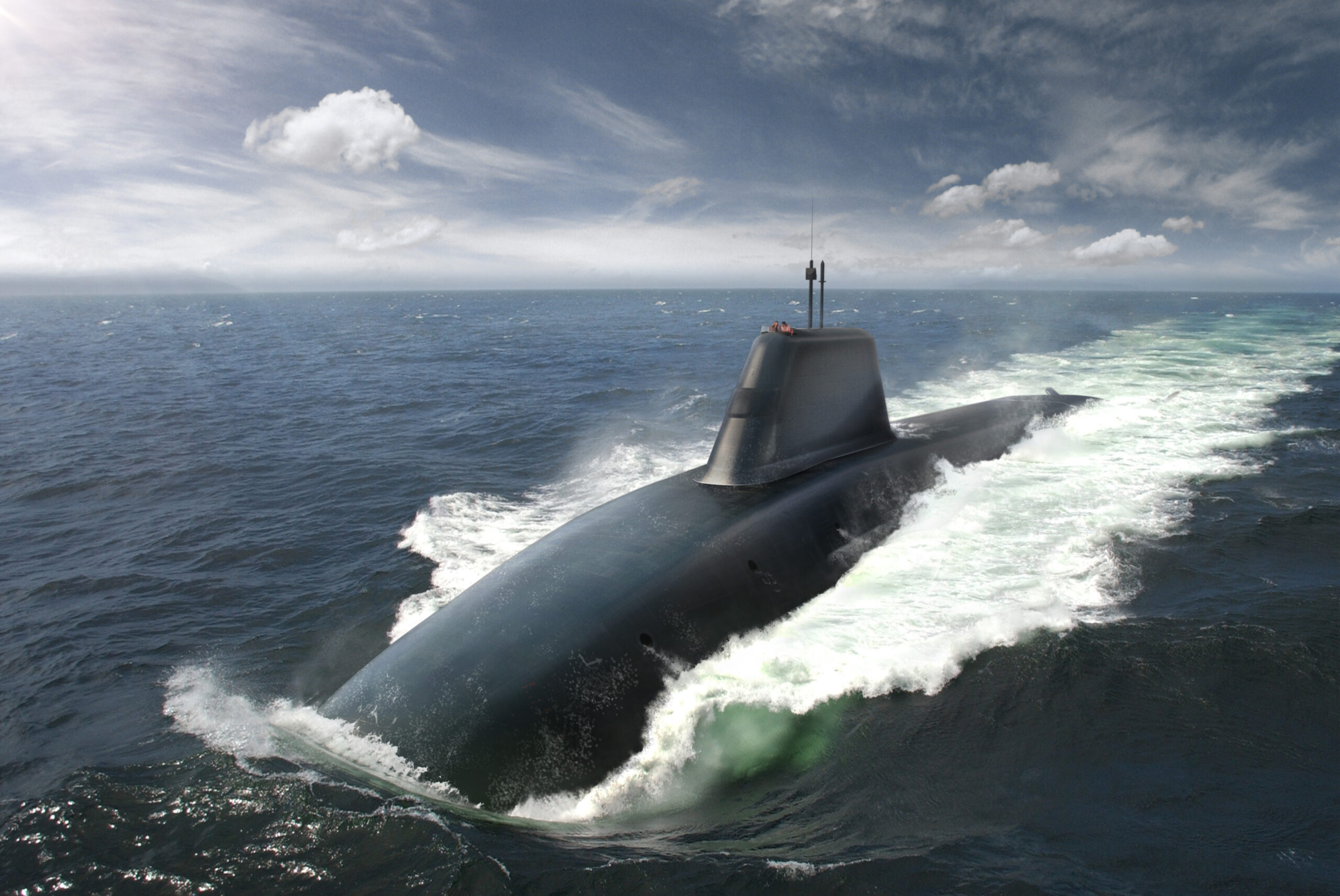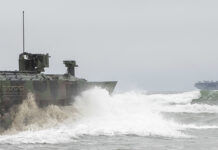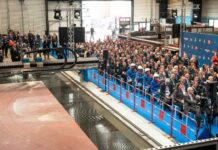The UK Ministry of Defence (MoD) published an update of its report to parliament on the status of programmes related to the United Kingdom’s future nuclear deterrent on 8 March 2023.
The main sections of the report cover production of the Royal Navy’s future fleet of four Dreadnought-class nuclear-powered ballistic missile submarines (SSBNs), upgrades to the submarine-launched ballistic missiles (SLBMs) that will arm them and the nuclear warheads these missiles will carry, and progress with infrastructure related to the delivery of the UK’s future sea-based nuclear deterrent.
Post-introduction, the top line of the report states that the Dreadnaught SSBN programme “remains within its overall budget and on track for the first of class, HMS Dreadnaught, to enter service in the early 2030s”.
BAE Systems is building the four Dreadnaught-class boats to replace the Royal Navy’s current fleet of four Vanguard-class SSBNs, which were commissioned from 1993 and currently provide the UK’s continuous at-sea nuclear deterrent.
Construction of the first two SSBNs, Dreadnaught and Valiant, is currently underway, while BAE Systems announced on 9 February 2023 that work on construction of the third boat, to be called Warspite, had now begun.
Once the Dreadnaught class enters service with the Royal Navy it is due to operate for at least 30 years.
The MoD report noted that “In May 2022 the Department announced the next and most significant phase of the programme, known as Delivery Phase Three (DP3). Defence contracts worth over GBP 2 Bn [EUR 2.24 Bn] were awarded to its Alliance Partners, BAE Systems and Rolls-Royce Submarines (RRS). This is the initial investment within a planned overall total of nearly GBP 10 Bn for the whole delivery phase. DP3 will see Dreadnaught exit the Barrow-in-Furness shipyard to begin sea trials and will lay the foundations for the delivery of the remaining three Dreadnought-class boats to time and cost.
The report added that, “As previously reported, all 12 missile tubes for Dreadnaught have been successfully delivered to the BAE Systems Barrow shipyard; these have now been integrated with the relevant parts of the pressure hull to form the missile compartment unit: a significant milestone in the delivery of the programme.”

Meanwhile, the report continued, “Progress continues across a wide range of Dreadnought programme activities. Most notable milestones over the past 12 months include: the maturation of the whole boat design, procurement of materials and equipment across the class, outfitting of modules for Dreadnaught, fabrication of the steelwork for Boat 2, Valiant, and the concluding investments in the shipyard infrastructure facilities at Barrow.”
In terms of costs the MoD report noted that the UK’s 2015 Strategic Defence and Security Review estimated that the Dreadnaught programme is likely to cost a total of GBP 31 billion (including inflation) over its lifetime and set a contingency of GBP 10 Bn. “The programme remains within this overall budget,” the report stated, “and, as of 31 March 2022, GBP 12.5 Bn had been spent on the concept, assessment, and early delivery phases of the Dreadnought programme.
Regarding the Dreadnaught class’s armament, the UK is upgrading and life-extending both the current warheads and the SLBMs that will carry them while working on a new warhead design. In this area the MoD report said that the programme to replace the UK’s sovereign nuclear warhead “has now entered its concept phase”, while the “transition of the current warhead from Mark 4 to Mark 4A continues, addressing obsolescence to ensure that the UK has a safe, secure, and available stockpile until the UK Replacement Warhead is available in the 2030s.”
The report further explained that the UK’s in-service and future replacement warheads will “remain compatible with the Trident II D5 missile that is deployed on the Vanguard class and will be deployed on the new Dreadnought- class submarines”, adding that the UK “is working with US partners on work to extend the life and replenish the Trident II D5 missiles to meet the future programme requirements of both nations”.
Addressing infrastructure related to the UK’s nuclear deterrent, the report noted that “the Primary Build Facility at the BAE Systems Barrow shipyard comprises two main facilities (buildings D58 and D59) connected to the Devonshire Dock Hall where the fabrication of the submarine reactor pipework and the final assembly of the reactor is carried out. … Building D59 became operational in July 2021, while Building D58 has made good progress and remains on track for operational capability in 2023.
“Project MENSA, the new-build warhead assembly/disassembly facility at the [Atomic Weapons Establishment] Burghfield site is progressing,” the report added, noting that the facility is now connected to the power, gas and water networks and will soon be commissioned in earnest.
The last update to parliament on the UK’s nuclear deterrent programme was published in in December 2021. The MoD stated that it plans to issue the next one in late 2023.
Peter Felstead











